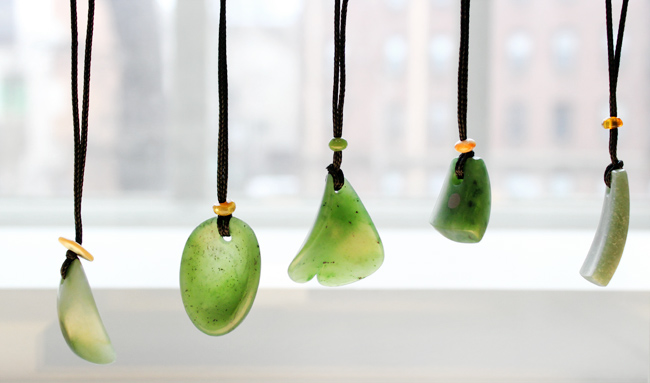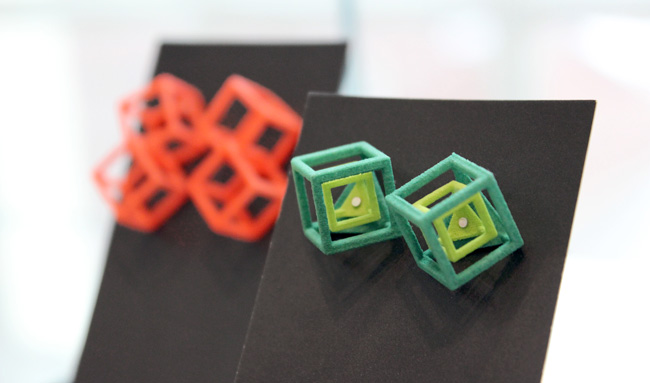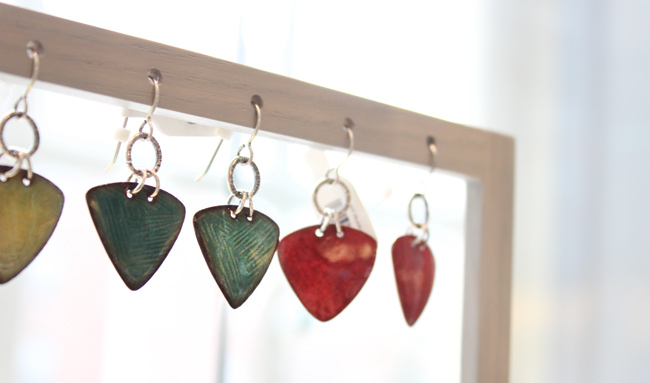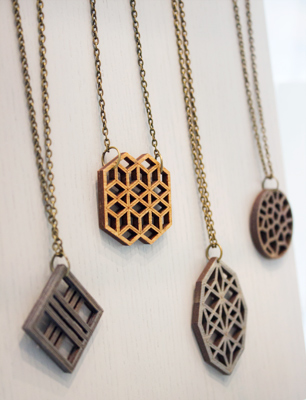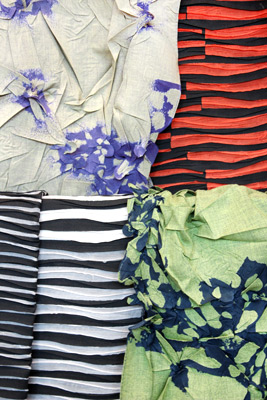Inside the Harvard Art Museums’ shop on a quiet weekday morning, late-winter sunlight shimmered against dangly silver earrings, speckled jade pendants, and delicate brass bowls. Across the room, rays lit up a rack of richly hued scarves.
“We have items here that you can’t find anywhere else,” said Sanja Cvjeticanin, director of visitor services, as she straightened out a display in preparation for the day’s first customers. A good proportion of the merchandise sold in the shop is handmade by local and/or independent, small-scale artisans; at any time, up to about 50 different producers are represented. “That makes these pieces objects of art in themselves,” Cvjeticanin said.
In curating the selection, Cvjeticanin aimed to find a mix of unexpected items that complement the museums’ atmosphere, collections, and mission of teaching and learning. “I was really interested in how items tie into the museums and the building,” she said. “I focused a lot on materials—playing off objects in the galleries, but not trying to reproduce them.”
Thus, a wide range of handmade paper goods reflects the abundance of works on paper throughout the collections. Distinctive journals have unusual characteristics, such as thin wood covers (by German manufacturer Bindewerk), exposed, patterned spines (by Belgium’s Le Typographe), and threaded exterior binding (by Brooklyn-based Twigg’s Bindery). Blank notebooks with cover images of brushes and paint splatters (by L.A. studio Wrapped) are a nod to the materials-focused work of the Straus Center for Conservation and Technical Studies, while Pantone-brand journals evoke the museums’ historic pigment collection.
The jewelry selection incorporates a variety of materials, from precious metals used in the work of New York’s Rina Young to polished jade earrings and pendants by the museums’ own Peter Schilling. Wood, a prominent building material in the renovated museums, is highlighted in laser-cut jewelry by Hawkmark Studio, based locally in Somerville (and co-owned by the museums’ Antoinette Hocbo), as well as Molly M. Designs, of San Francisco.
Cvjeticanin has noticed that customers seem especially drawn to the selection of objects that can be used for the office or home, such as the colorful and infinitely reshapeable wooden sculptures by Beyond123 and Mighty Morph notepads by Schleeh Design.
Scarves include vibrant creations by Rhode Island’s Yuh Okano. Felt iPad cases, ceramic bowls, and other decorative and functional handmade items round out the offerings, which will change over time, based on demand and availability.
Along with the museums’ branded merchandise and books related to what is on view in the galleries, these unique shop offerings are objects worthy of display.

